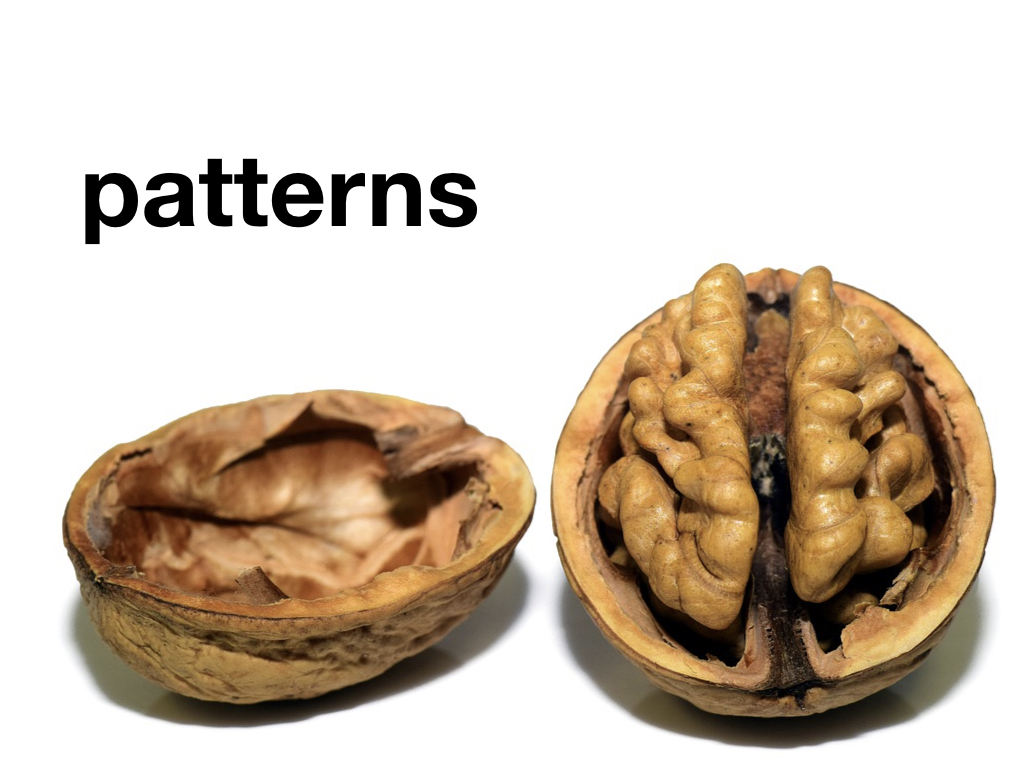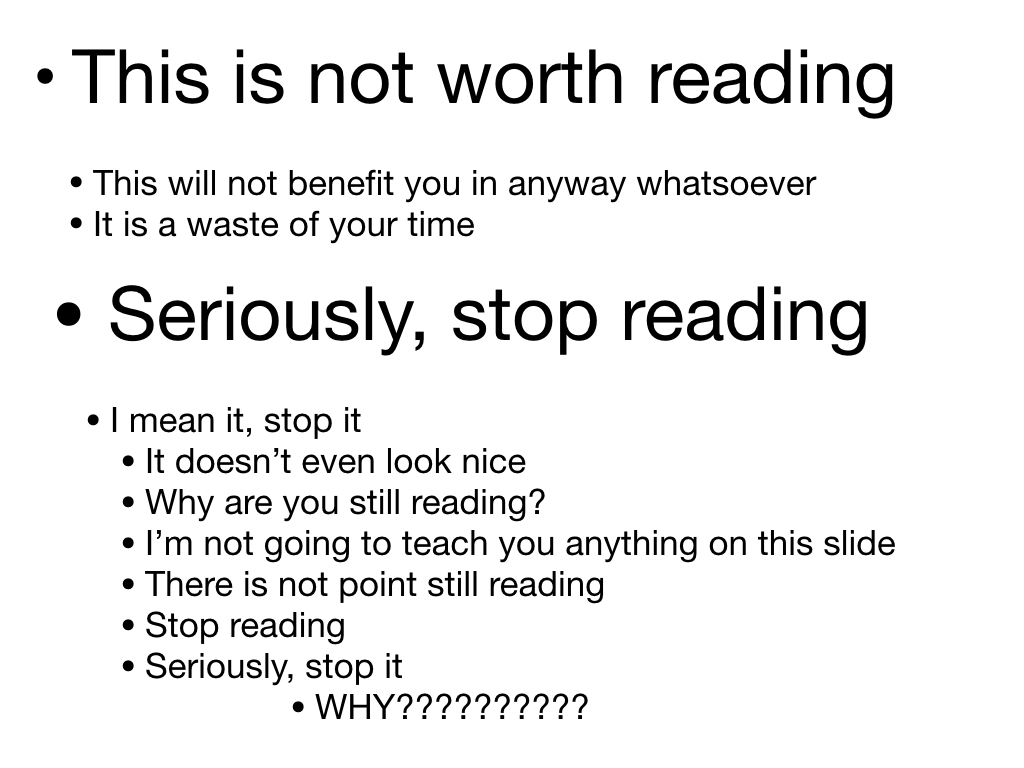Audience audience audience
Now we’ve established that a presentation is more than just your slides it’s now time to actually start thinking about how to start planning a talk.
Any presentation is not about the speaker. It’s about the audience; first, second and third.
When you start planning your presentation ask yourself: who are my audience? Why are they going to be there? It doesn’t matter if you’re giving a keynote speech, presenting at a job interview or presenting an audit at your departmental meeting, starting by thinking about your audience ensures that anything you do will be aimed precisely at them.
If you’ve been asked to give a presentation ask why. It’s very common for invitations to talk to be vague; “oh we’d love to hear about that work you did”. Once again you need to be precise. Why have you asked me? What aspect exactly do you want to know?
If you’re presenting at a conference who is attending? Most conferences have a theme; something like “inspiring excellence”. Find out the theme and this will help you shape your talk.
Who else is presenting? Get in touch if possible. What are they talking about? Collaborate with them. All the while making sure you’re building a presentation with your audience first, second and third.
If you’re not sure about the group you’ll be talking to find out at the beginning. If you don’t know about them talk to people who do. Ask yourself two questions: “what do they want to know?” “What do they need to know?”
This may seem like a strange distinction to make but it’s also important. For example, I teach final year medical students. Near the end of the year in particular they are always driven by the imminent exams. What they WANT to know is anything that will be in their exams and nothing else. So when I start talking about things that won’t be in exam but will be issues when they’re doctors there’s potential to lose them. That’s the distinction. They WANT to know what’s in the exam to become doctors. They NEED to know how to stay doctors once qualified. That distinction has to be bridged. Consider if it’s suitable to bridge it there and then. If it is then you know you’re going to have to be very clear about why they need to know what you’re about to tell them. Appreciating this at the start is crucial as you begin planning your talk.
Check out where the conference is being held and try and get a feel for the place if possible. What will work? What won’t? Find out how long you have to talk. Whatever it is take 20% off. No conference runs to time. Aim to only need 80% of you allotted time. The rest will be used up. Trust me. Whether it’s other speakers overrunning or questions or delays with technology the time will be taken up. If not by finishing early you can help keep things flowing and the organisers will love you. Never overrun. Ever.
You may notice that the first two steps are about shifting away. Step One was about shifting emphasis away from slides. Step Two has been about shifting emphasis away from you to your audience. These shifts should be liberating. By not relying on slides we are encouraged to innovate with our presentations. By focussing on our audience and not us we ensure the presentation will be compelling. The point is not to be Luke Skywalker. The point is be Yoda. Yoda has a small part of the original Star Wars trilogy. Yet he opens up a whole new world to Luke which shapes what comes afterwards. Your audience may never see you again but you have an opportunity in the short time you have with them to open up possibilities they may never have known otherwise. It’s not about you it’s about them.
In order to help put our audience first is to understand the mind of an audience member. First, human beings are designed to love patterns. The first pattern we learn as newborns are faces, those of our parents and then our family and so on. This love of faces continues so much that we will find them even in photographs of Mars. More on faces later.
The next pattern we love are words. Words are patterns of squiggles (letters) with meaning. And we love them. Show your audience words and they will read them. No matter what they are. Even if it’s my mobile phone contract.
Or even if you tell people not to read.
Words on a screen are there to be read. Your audience can’t help it. Put them up there and watch your audience’s eyes move from you to the screen. As we already discussed you can’t read, listen and learn. Put words up there and you lose them. We’re addicted to words. Words are a controlled drug like morphine. We have to be careful prescribing controlled drugs. We have to have the same caution when we use words in our slides because we’re dealing with addicts.
We finally have to consider our audience’s attention span. There’s a reason TED talks last 18 minutes. 17 minutes is the longest we can hold attention. One hour long talks are simply pointless. Luckily, you can reset your audience’s attention with other things. If you’re doing a workshop break it up with an exercise. If it’s a keynote speech use a video, music, dance, whatever but break it up. Afterwards your audience’s attention is reset for another 17 minutes.
TED talks use the 18 minute limit to help focus the speaker’s message. More on that in Step 3.








